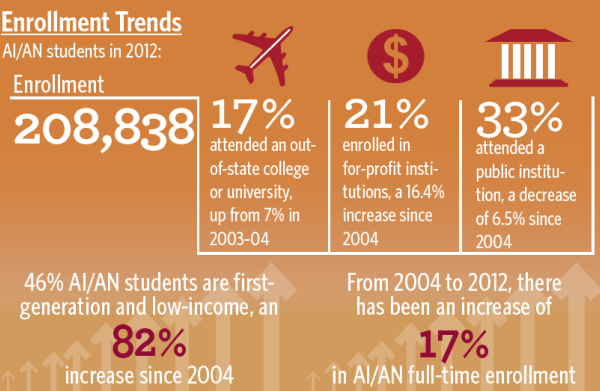By Louis Soares and Steven Taylor
A competitive workforce and an innovative economy have always depended on a mix of formal postsecondary education and “learning by doing” in the workplace. The interchange of these two forms of learning builds skills and leads to discoveries that transform technologies, products, organizational processes, and markets.
At certain times in economic history this mix has shifted, with one type of learning having a greater impact on people’s lives. We are now in such a time. When new knowledge and technology are still taking hold in industries, products, and the economy as a whole, learning by doing becomes a powerful driver of optimizing human capital, especially when balanced with formal education. Economists refer to this phenomenon as synchronous technological change. The recent announcement by the Trump administration and lawmakers in support of championing apprenticeships reflects the reality of synchronous technological change. If leveraged well, this can support both worker success and business competitiveness.
Accomplishing these twinned goals requires an understanding of learning by doing, post-traditional and adult working learners, and flexible completion pathways.
The Trump Administration’s Apprenticeship Solution
The Trump administration has prioritized career and technical education programs as part of its workforce development and infrastructure plans. On July 31, the president signed a bill to reauthorize the Carl D. Perkins Career and Technical Education Act, which provides $1 billion annually to states to fund vocational and career-focused education programs.
The president has also made a range of other moves to signal his administration’s commitment to preparing the nation’s workforce. On July 19, he brought together leaders from more than 20 of the largest employers in the country along with related trade groups at a Pledge to the American Worker event at the White House. The industry executives signed a pledge to “expand apprenticeship programs, increase on-the-job training, and educate both students and workers throughout their careers.” The pledge was a visible commitment by industry executives to add 3.8 million new training opportunities over the next five years to equip workers with in-demand job skills. The impetus for this investment was an executive order on job creation to establish, fund, promote, and expand access to industry-recognized apprenticeships.
Among other commitments to growing the nation’s skills base, the executive order establishes the National Council for the American Worker, the American Workforce Policy Advisory Board, and the Task Force on Apprenticeship Expansion. The National Council for the American Worker, made up of cabinet members and senior White House officials, will develop a national workforce training strategy to meet current and future workforce skills needs as well as to oversee and track the effectiveness of current and future training programs in preparing high school graduates and mid- and late-career workers for jobs in the new economy.
The day before President Trump’s Pledge to the American Worker event, Secretary of Labor Alexander Acosta announced a new grant program, Scaling Apprenticeship Through Sector-Based Strategies. Under the program, the Department of Labor will award up to $150 million in grants to approximately 15 to 30 apprenticeship programs, with awards ranging from $1 million to $12 million based on the size of the industry sector being addressed and the proposed scale of the program. The program is expected to expand apprenticeships to occupations such as information technology, advanced manufacturing, banking and finance, and health care. The program aims to increase the range of employers, particularly small- and medium-sized businesses, that are engaging in apprenticeship programs; and promote work-based learning.
For such an initiative to be successful, it will have to adhere to design parameters that understand learning by doing, support workers as they integrate formal education and workplace learning, and enable flexible completion pathways.

The Rise of Learning by Doing in Times of Technological Change
Economists have a term for a technology that is a building block with a wide range of applications in the economy—a general purpose technology (GPT). Electrification, which transformed manufacturing and household production in the early twentieth century, and mechanization, which transformed manufacturing and agriculture in the nineteenth century, are examples of GPTs. The emergence of a GPT can be disruptive to an economy because new technologies yield inventions that change economic life over time, usually a period of two to three decades. These changes occur as knowledge emerges and stabilizes, workers adapt and learn new skills, and employers try to understand how new knowledge and skills transform how they organize their production.
Today, the nation’s economic life is being disrupted by the latest, and perhaps most potent, GPT—information technology, which is transforming multiple economic sectors (e.g., health care, manufacturing, and logistics) simultaneously in a process of synchronous technological change. The history of previous GPTs shows us that this type of multi-sector synchronous change is accompanied by a sharp rise in learning by doing.
Learning by doing has surfaced in the relative rise in demand for experienced workers; the increase in demand for applied learning experiences like internships; the emergence of credentials like badges that purport to validate ever smaller units of learning, competency-based education; and now apprenticeships—a paradoxically old and new way of learning by doing. Each of these is, in part, a manifestation of GPTs transforming an economy such that learning in the workplace occurs so rapidly that education institutions aren’t able to create curricula and programs that can serve working learners at scale.
Apprenticeship programs train individuals to achieve workforce-ready and job-specific knowledge and skills through supervised, work-based learning and related academic instruction. Apprentices are working learners. They are employed at businesses and organizations that have critical talent needs and invest in developing workers’ talent by combining productive work with learning experiences that lead to demonstrated proficiency in an array of tasks.
Navigating Earning and Learning Simultaneously
Learning by doing occurs in workplaces intentionally designed for adult workers to combine working and learning in balance with other life commitments. In reference to the reality that working learners are not the traditional college student, ACE also calls this type of person a post-traditional learner. With the broadest possible categorization, post-traditional learners are aged 25 to 64, already in the workforce, and lack a postsecondary credential but are determined to combine pursuing an education with their work and life commitments. To manage these priorities, post-traditional learners need a more flexible learning ecosystem distributed across different life stages, places, times, platforms, and experiences.
Post-traditional learners are a diverse group. The term encompasses individuals with a range of education needs from high school graduates to high school dropouts and those with limited literacy and English language skills. Post-traditional learners also encompass many life stages and identities: they are adults with some college but no degree, working learners, single mothers, immigrants, veterans, and at-risk younger people looking for a second chance.
Scaling learning by doing initiatives that work for post-traditional learners requires looking beyond this diversity and embracing five important commonalities. Post-traditional learners:
- Are needed wage earners for themselves or their families
- Combine work and learning at the same time or move between them frequently
- Pursue knowledge, skills, and credentials that employers will recognize and compensate
- May require developmental education to be successful in college-level courses
- Seek academic/career advising to navigate their complex path to a degree
In turn, these five commonalities are reshaping the demand for postsecondary education in the twenty-first century into a more fluid form of college-going, embodied by longer, episodic participation, more customized pathways to degree or credential completion, and a focus away from credit hours to competency and knowledge demonstration and application. This form of college-going includes:
- Modular, easy-to-access instruction
- Blended academic and occupational curricula
- Progressive credentialing of knowledge and skills (sub-degree level)
- Financial, academic, and career advising
- Public policy that reflects the complex task of balancing life, work, and education
ACE: Enabling Flexible Completion Pathways
The nature of learning by doing and the needs of post-traditional learners require a new way of connecting learning across workplace and academic settings. ACE’s way of connecting learning is to enable flexible completion pathways, which acknowledge that learning is fluid and ongoing, occurs in multiple contexts, and incorporates validated learning experiences into formal workforce and postsecondary credentials. Enabling flexible completion pathways requires the ability to evaluate and assure the quality of learning at different levels (course, program, provider, credential) and in different settings (formal postsecondary education institutions, alternative providers, community and workplace settings).
ACE’s Center for Education Attainment and Innovation (CEAI) serves post-traditional learners by supporting extra-institutional training providers—military, government, and community-based nonprofit and corporate organizations—to build stronger workforce and college partnerships that support lifelong learning and talent development. CEAI bridges education and work through alternative learning pathways, quality assurance, work-based learning validation, and innovative practices and approaches that help working learners, institutions, and employers succeed in a changing postsecondary landscape. Using our broad reach to postsecondary institutions, extra-institutional providers, employers, and learners, we work to highlight, scale, and connect ACE members with emergent innovations such as Credential Engine to improve credential transparency, the GED® test as a critical tool for college and career readiness, and competency-based education research and tools for practice.
As part of a national strategy to enable post-traditional learners’ success, ACE has doubled down on its commitment to expand flexible pathways for completion through innovative learning. CEAI is at the forefront of promoting work-based learning practices and policies to provide affordable, high-quality, flexible completion pathways. Through our partnership with Northeastern University (MA) and GE Aviation, CEAI is entrusted with the quality assurance of an innovative, experimental advanced manufacturing degree program to equip workers with in-demand job skills to meet growth in the advanced manufacturing sector. Building on ACE’s College Credit Recommendation Service (CREDIT®), CEAI is delivering on innovative credentialing solutions through a partnership between CREDIT and digital badging provider Credly to enable a more systematic recognition of learning and skills development using portable, digital credentials.
At a time of great technological change, learning by doing can be a source of economic growth and opportunity. The partnerships made possible by the Trump administration’s grant programs can accomplish these goals if they are designed with the nature of learning by doing, working learners, and flexible completion pathways in mind.
If you have any questions or comments about this blog post, please contact us.




